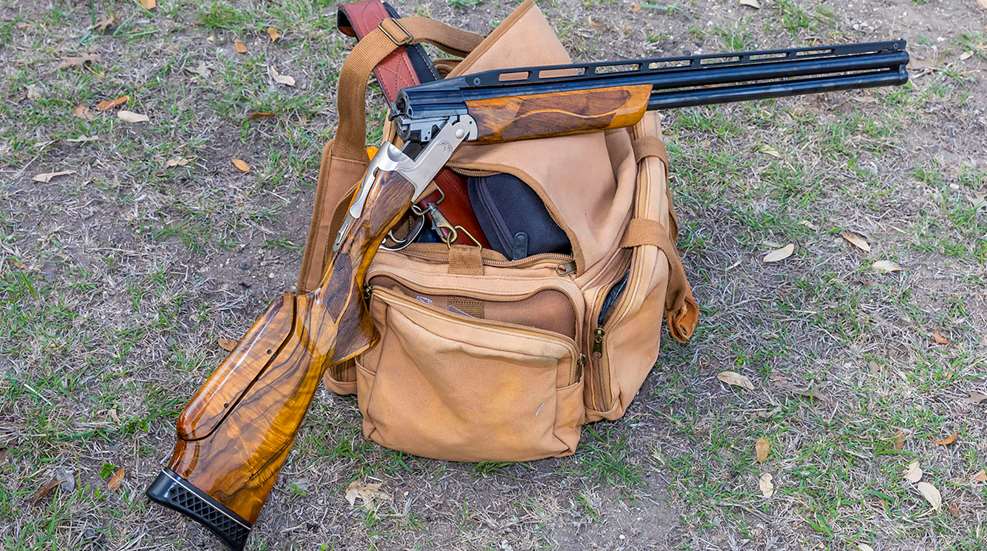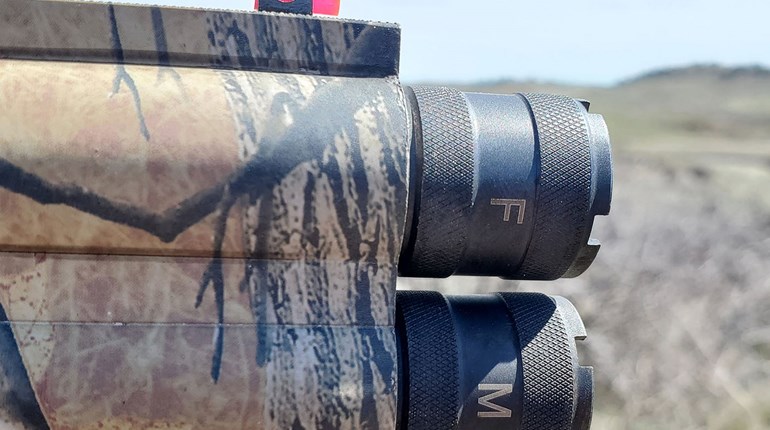
Insurance is one of those things we all complain about even though we understand the need for it. You know you should insure things that are valuable to you—your health, your life, your car and your home, among others. Depending on the size of your collection, your guns might fall into this category, too.
What many shooters don’t know is that a typical homeowner’s insurance policy has limitations on personal property—that is, everything in a home that’s not part of the home itself. This includes things like jewelry, electronics, art and guns. Coverage varies based on your policy, but most homeowners’ policies put a limit of $2,500 to $5,000 on guns, if that. That’s not per gun, either—it’s the total amount they’ll pay out if your entire firearm collection is stolen, destroyed or damaged in a fire or flood.
It doesn’t take long at all to hit that limit, particularly if your gun collection includes rifles with moderate to high-end scopes. The first line of protection for your firearms collection should be a good gun safe with the best heat rating you can afford, but even the best safe is no guarantee against fire and flood damage.
The second line of protection you should consider for your gun collection is insurance. There are two general ways to obtain this. The first is to add a rider to your homeowner’s policy that specifically covers firearms. You can get a rider for any amount you want and can expect to pay 1% to 2% of the coverage amount in premiums per year, give or take. For example, if you estimate your gun collection to be worth $20,000, you should be able to call your insurance agent and have him or her add a $20,000 firearms rider to your homeowner’s policy that will cost you in the vicinity of $200-$400 a year. And while you’re at it, you might want to add separate riders if you own expensive jewelry, camera or computer equipment, pricey artwork or other valuables that exceed your personal property coverage limits.

The replacement cost of this one rifle and optic alone will exceed the coverage limit of most homeowner’s insurance policies.
The other way to insure your firearms is to purchase a separate policy through a company that specializes in firearms coverage insurance (not firearms liability insurance or concealed carry insurance, which are designed to pay legal fees, not to replace damaged or stolen guns).
Whichever option you go with, be sure you understand what it covers and doesn’t cover. Most are pretty comprehensive, but there will always be exclusions. Does the policy replace your duck gun if you drop it in a lake? If you lean it against your truck bumper on a hunt, forget it and back over it? If an airline loses or damages it in baggage handling? If your home floods and your gun safe gets waterlogged? Floods are particularly tricky because they’re excluded from most homeowner’s coverage, so read the fine print on your firearms policy. Many policies do not cover theft from an unattended vehicle, so be aware of this before leaving your guns in a car.
Many companies—but not all—want an itemized list of each and every firearm you have insured through them, including serial numbers. These are “scheduled list” policies, where each item is covered for the amount specified. The alternative is a “blanket” policy, which covers a collection worth whatever you specified when you purchased it. Blanket policies can be cheaper but usually have limits on how much each specific gun will be covered for. If you own high-end guns, avoid blanket policies.
Some people get bristly about scheduled list policies, not wanting anyone to have a list of their personal property, especially guns. In my household, we have a rider on our homeowner’s policy that covers our firearms and riflescopes, and State Farm required an itemized list of serial numbers. This isn’t a huge deal to me, so we made and handed over the list.
Whether it’s required by your firearms policy or not, it’s a very good idea for you to keep a list of the guns and optics you own for insurance purposes, including serial numbers and maybe the original purchase prices. Some policies pay actual cash value and some pay full replacement cost. You want one that pays the full replacement cost—otherwise you could find yourself paid pennies on the dollar for a gun you bought 30 years ago, and you won’t have enough money to replace it with a new one at today’s prices.
Remember to keep your master list updated for your own purposes and to update it with your insurance provider as needed. Some companies will not pay for a gun that’s not on their list, and if this applies to your policy, as you add to your collection, you’ll need to keep the insurance company updated.
While you’re making this inventory list—whether you plan to hand it over to insurance or just keep it for your records—it’s a smart idea to take a photo of each gun you own, followed by a closeup of the serial number. This serves a similar purpose as the list and provides further evidence of what you owned if you ever need to make a claim. In most cases, you can’t just call your insurance agent and say “Yeah, my house was burglarized and I lost six guns worth $10,000. Can you cut me a check?” They’re going to demand evidence that you owned those guns to begin with. Photos make this a breeze.
Keep your itemized list and photos somewhere safe and preferably somewhere separate from your guns. If your home burns down with the guns and the photos in it, you’re out of luck. A safe-deposit box or trusted friend or family member’s home are good places to keep your lists and photos. Keeping electronic copies in the cloud is another simple solution if you’re comfortable with it.
Take a few minutes to review your homeowner’s or renter’s insurance policy and see what the personal property coverage limits are. If your gun collection exceeds the limit for firearms, consider insuring your guns separately so you’d be able to replace them if they’re lost to theft, fire or other catastrophes.














































